By adopting a biodynamic approach to keeping chickens, you will be creating a more balanced and sustainable system where hens are in harmony with nature, says Julie Moore
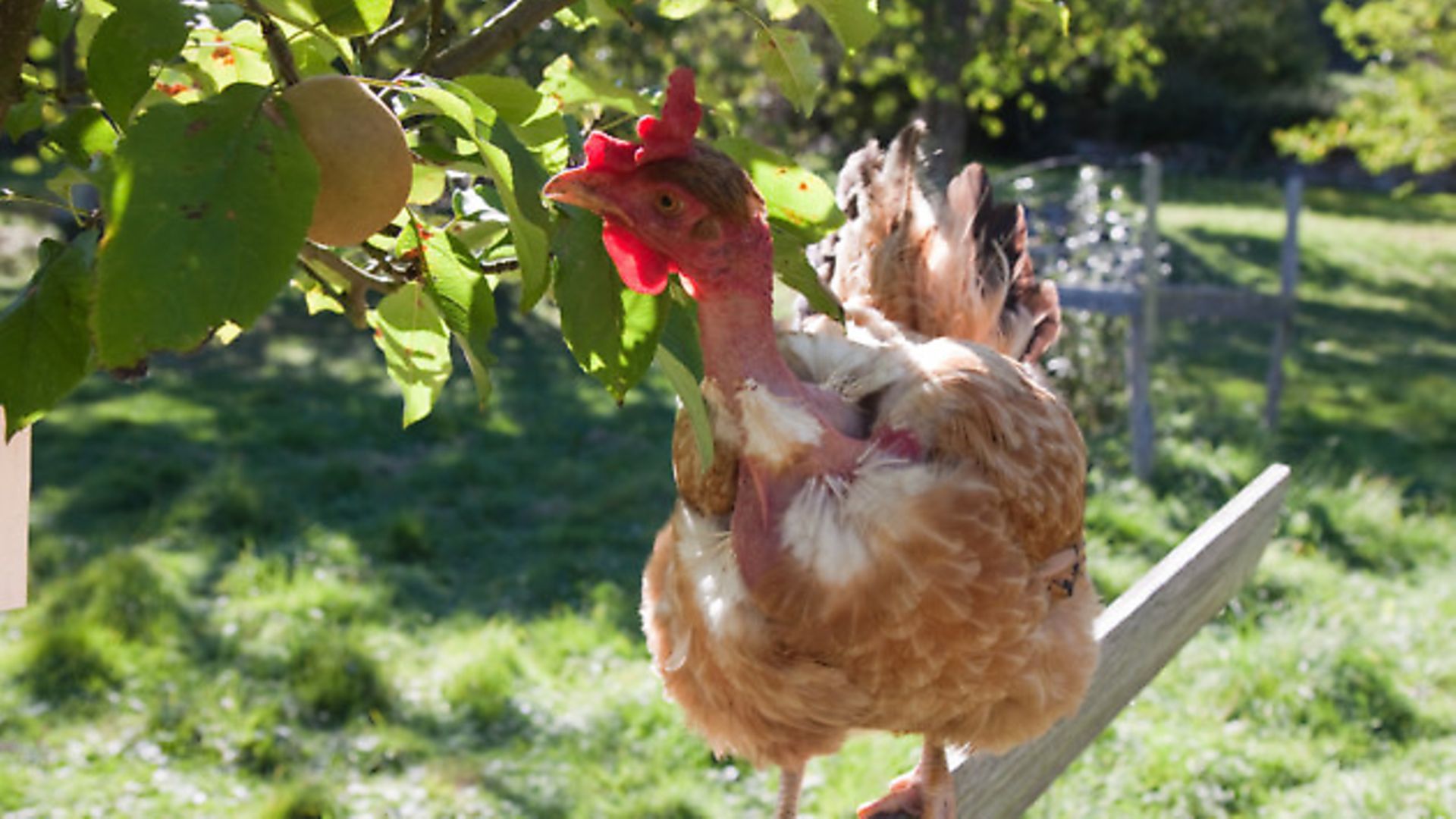
The humble chicken is a victim of its own success, having become an intensive meat and egg factory with many of the chicken’s basic needs neglected due to economic pressures. As public awareness of this exploitation grows, there is also an increasing interest in biodynamics which recognises that sustainable and ethical production depends upon animal welfare.
Biodynamics is essentially a sustainable and holistic approach to farming. Responding to the concerns of a group of farmers about the future of agriculture under a chemical fertiliser and pesticide regime, Austrian Rudolf Steiner set out his own principles of biodynamics in 1924. Steiner’s ideas were simple: to work with invisible energies and forces that exist as well as those we can see around us. Steiner saw the farm as a self-contained, self-supporting unit producing its own manure and animal feed without the use of pesticides or fertilisers.
Just as Steiner viewed the farm as a self-contained unit, you too can keep and raise your chickens in balance with nature and the cosmos by applying the same principles.
But before we can apply those principles, we need to remind ourselves of what our chickens actually need.
• Housing and roosting — the forest was their original habitat, living in flocks with one cockerel to 6 – 30 hens. Towards dusk, the chickens would look for a place to sleep, preferring to sleep as high up as possible, usually in trees.
• Runs and dustbathing — during daylight hours, the chickens were active, foraging for food and resting in the shade. We can see that their legs are strong and are made for running and scratching. The forest provided plenty of hiding places from birds of prey and other predators, the hens running for cover when the cockerel gave the warning call. Dustbathing was a key element of their daily routine, not only in the sense of a social gathering but to keep feathers healthy and external parasites at bay.
• Moulting — is Nature’s way of giving the hen’s reproductive system a rest. Moulting can take anything from a few weeks to several months during which time no eggs are laid. Moulting should be viewed as a ‘must’ and occurs at the end of the laying season.
• Nest boxes — Gallus gallus produced around 30 eggs annually. Today’s commercial hybrids can lay up to 300 eggs per year. Laying eggs in Nature takes around three hours; 15 minutes in a commercial operation. Hens prefer to lay their eggs in a quiet, dark and private place.
• Feed — producing eggs places a heavy demand on a hen’s body; she needs an appropriate high quality feed to support both herself and her developing egg. Ideally, the food should be full of life: live worms and insects, whole grains with the germ in them, green leaves, small stony fragments to grind seed in the gizzard, shell fragments to help provide the calcium needed to build their own eggshells and of course, fresh, clean water.
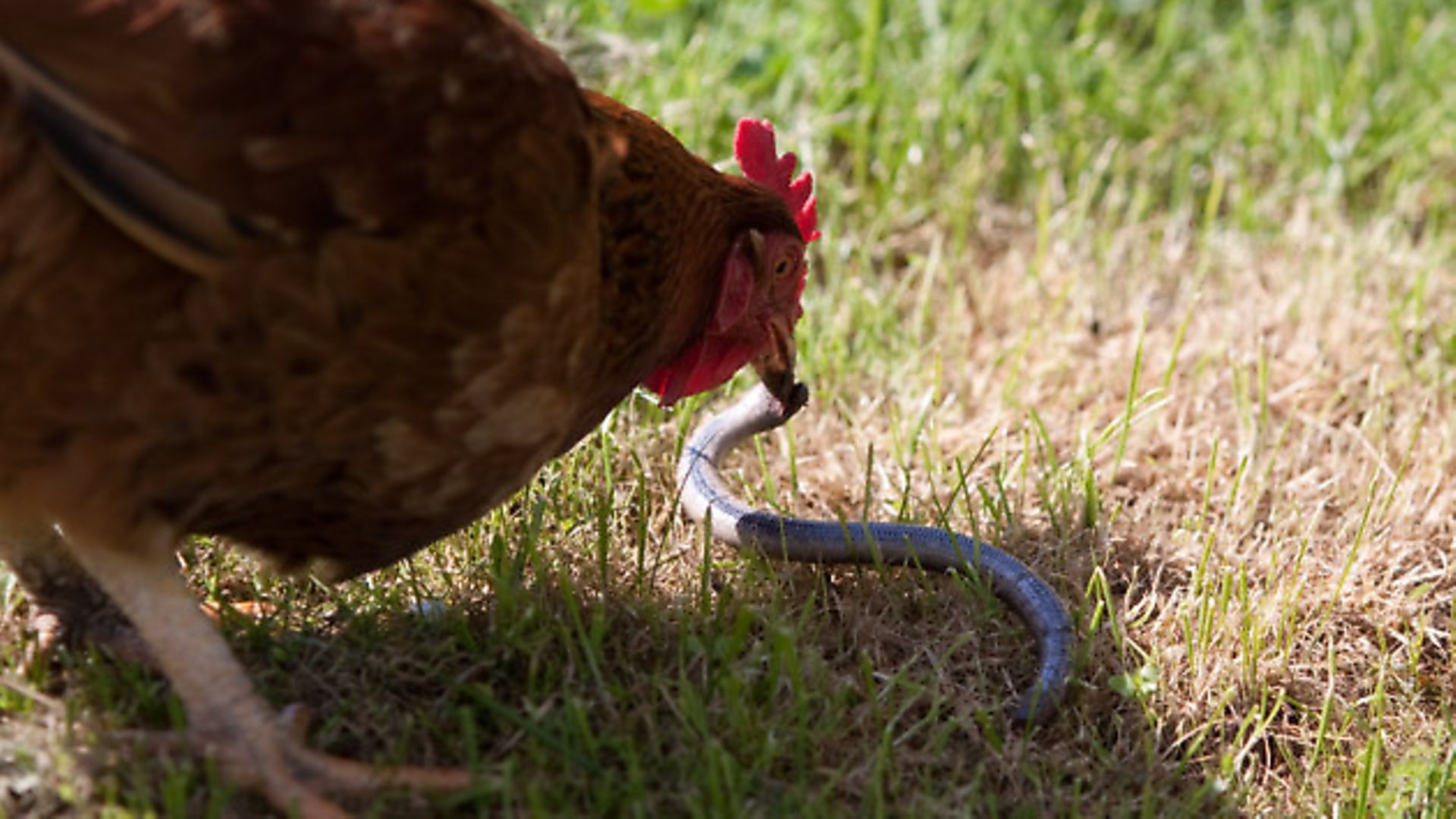
• Chicks — from the outset, chicks should be able to see and peck at small worms and insects. A broody hen is invaluable as she will teach a chick what to eat, where water is and how to take a dustbath.
So how do you start to keep poultry biodynamically? It’s important to remember that as everything is connected, you’ll need to begin all in one go.
Perhaps the first place to begin is with you, the smallholder and your way of thinking. After all, you will be an integral part to the whole biodynamic approach. A biodynamic smallholder thinks of the smallholding as a living holistic organism with various parts that mutually support each other. It’s about building up a healthy and sustainable organism in which you grow a wide diversity of crops appropriate to where you live and the poultry you keep are also appropriate for your location; all without the need for fertilisers and pesticides or veterinary care. The farm organism principle is key to the biodynamic approach.
Now that we understand the basic needs of chickens, we can start to recreate a self-sufficient ecosystem that is as close to their natural habitat as possible and recognises that the chickens play an integral role in that ecosystem, producing vital ingredients to ensure the dynamic recycling of nutrients.
Starting with their habitat, an orchard with moveable housing would come pretty close to their natural environment. The chickens would be able to roam freely, scratching for and eating ‘live’ food such as worms and snails and damaging insects. They relish any fallen fruit and thus help prevent diseases from rotting fruit. In effect, they can be thought of as organic pesticides. They’ll find their own small stones that they need to grind food in the gizzard. The trees would provide shade and cover from airborne predators whilst also offering the opportunity to perch high off the ground.
Regularly treating the ranging area with biodynamic preparations will promote soil life and vitality on the land. Cowhorn manure (Preparation 500) increases soil life activity which is essential to the chicken’s diet of ‘live’ food. Cowhorn silica (Preparation 501) is active in the area of light and growth, enhancing the forces emanating from the cosmos and constellations. The spray increases the nutritional qualities of the range which are passed on in the food chain to make your eggs full of vitality.
The sprays can be purchased directly from the Biodynamic Agricultural Association, contact details at the end.
Raising hens with cockerels recreates a natural flock environment. As leaders, the cockerels will protect the hens at all times, find the best food for them and stimulate healthy behaviour amongst them.
The housing should be as cool and airy as possible, so ventilation is key. As hot air rises, the trees provide shade to the roof so that the house does not become too hot. Litter choice will depend upon what is available, but whatever your choice, it should be easy to clean out and replenish.
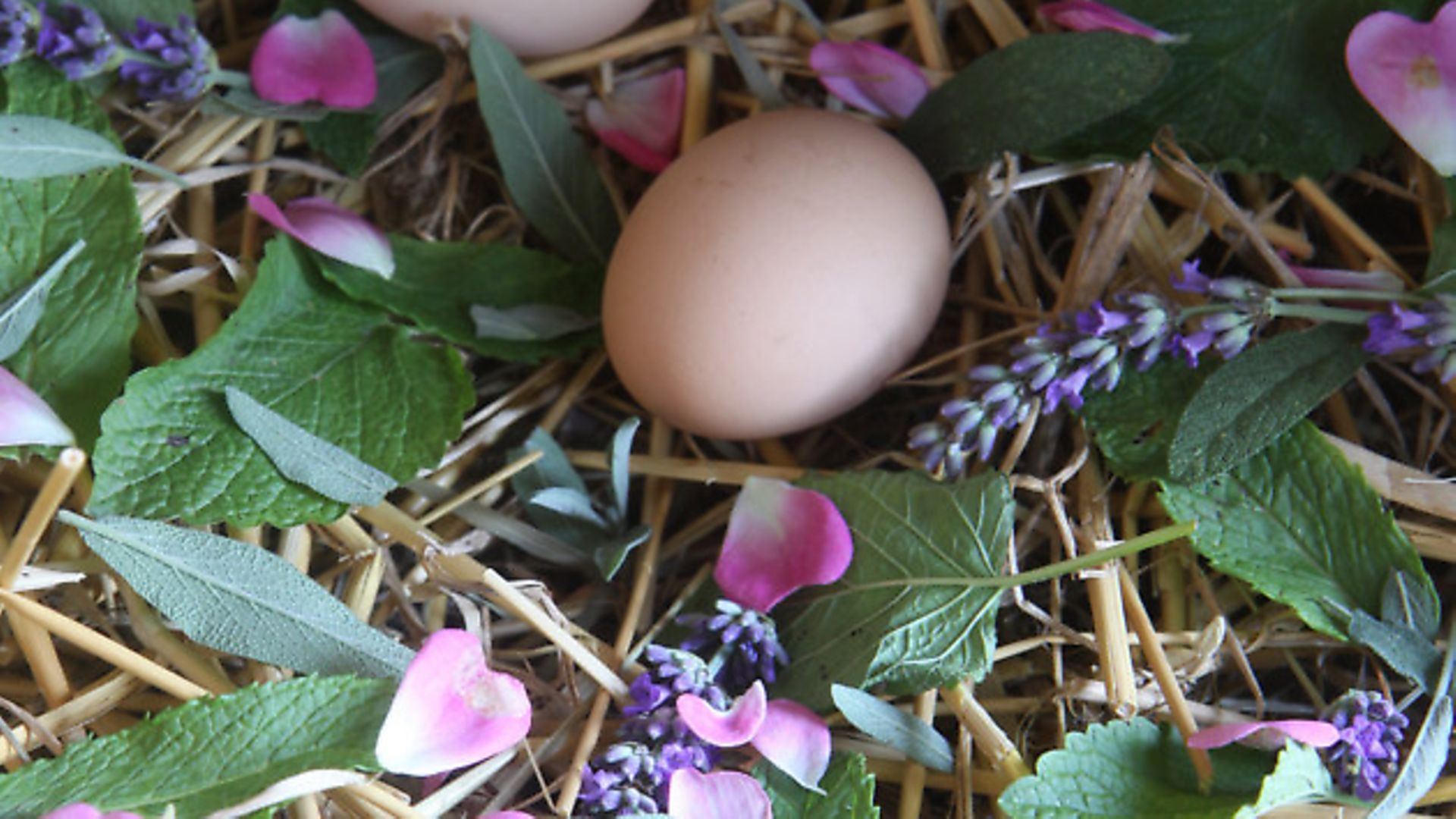
Perches should be provided to reflect the desires of chickens to roost as high as possible. Installing droppings boards under the perches will help keep the house relatively poo-free so that the litter stays cleaner for longer, the chickens have clean feet and you have clean eggs. The droppings can be scraped into a bucket and emptied straight onto the compost heap. Additionally, you can monitor the health of everyone by looking at their droppings enabling you to treat any ailments early.
As hens like privacy when laying eggs, nest boxes should be located in a quiet, dark corner of the house. Adding a blend of fresh or dried, highly aromatic herbs that contain strong smelling volatile oils to the nest boxes can not only affect the mood and stress levels of your laying hens by calming them, but some oils, for example thyme, have anti-bacterial and anti-parasitic properties too. There are many herbs to choose from, each with their own beneficial properties.
Growing food for the chickens is also part of the self-supporting ecosystem and is another example of how everything is interlinked. Plants need nitrogen to grow, but it must be broken down. Chickens produce nitrogen in their droppings. You collect the droppings and add them to the compost heap to decompose. The resulting dark, crumbly earthy-smelling material is then returned to the soil. Biodynamic seeds are sown into the humus enriched soil. The chickens then eat the crops you’ve grown to complete the cycle. It’s unlikely that you’ll be able to grow enough food, so you’ll need to source suitable quality grain mixes that are free from GMO and artificial enhancers.
By keeping cockerels, you’ll be able to establish your own closed flock. The flock will adapt to the plants and conditions of your smallholding and live a healthy life so that you can be confident that you have strong breeding stock. Healthy chickens depend not only on how they are currently raised but on how their parents were raised — it’s not just about physical nourishment, but also what’s absorbed through the sensory system.
From a biodynamic perspective, chicks hatched artificially have weak lungs — warmth comes from a heat lamp, not a mother hen’s body and the air they breathe is dead. Their food is dead — they have no mother to teach them what to eat and how to find their own live food.
The biodynamic calendar can be used to not only determine the optimum times to sow, transplant, harvest and tend crops, taking advantage of the cycles of the moon, planets, stars and sun but also to hatch eggs. According to lunar observations, chicks hatched under a new moon in the water signs of Cancer, Scorpio and Pisces are healthier and will mature faster. They’ll also tend to have a maternal instinct and be good layers. Chicks hatched under an old moon are likely to be weak and suffer illness.
The period between the new moon and first quarter is likely to give the optimum hatch success. For a higher percentage of pullets, collect eggs during the first quarter of the moon phase. If you’re worried about hatching out too many cockerels, avoid setting eggs which were collected during the last quarter of the moon phase.
Under a biodynamic regime, antibiotics and veterinary medicines are taboo. Instead, herbal remedies for the prevention of diseases can be prepared and given to chicks and adult birds alike in drinking water, for example, add pounded comfrey leaves to drinking water to prevent coccidiosis. Beneficial herbs such as chickweed, nettle seeds and mature nettles can be given as fodder. Some knowledge of herbal remedies is indispensable.
Whilst keeping poultry biodynamically might ask for more attention from the smallholder than under other regimes, the resulting eggs are very pure and provide nutrition that is full of life and of the highest quality. You’ll also be adopting the most environmentally sustainable and ethical approach to keeping poultry. If you do sell your eggs, biodynamic produce is becoming more and more appreciated in the market as consumers demand produce which is produced naturally and is full of vitality to feed their bodies and souls.
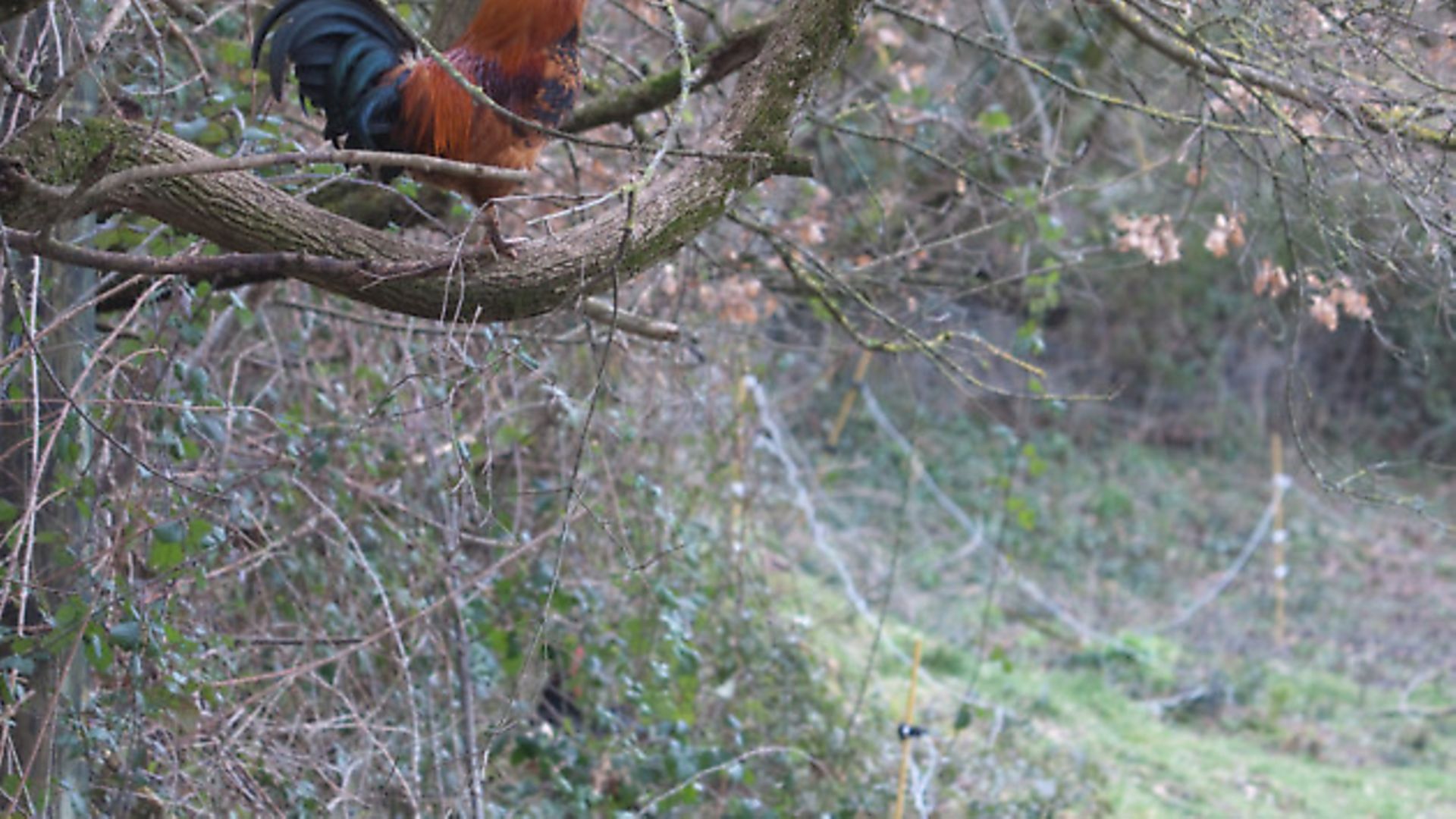
———————————-
MORE: Further information, contact:
The Biodynamic Agricultural Association
Painswick Inn Project,
Gloucester Street,
Stroud,
Glos,
GL51 1QG
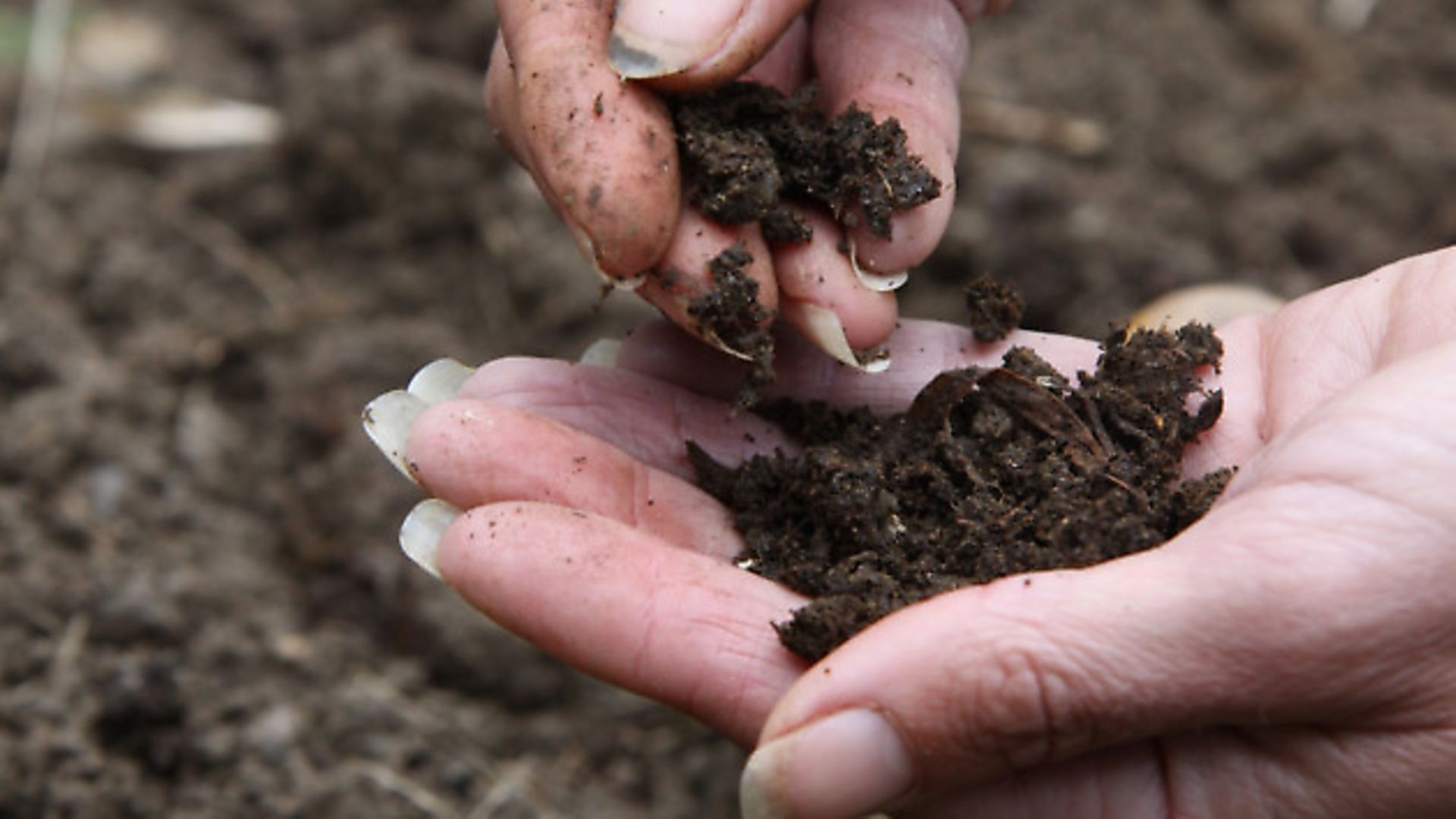
Image(s) provided by:
Archant
Archant
Archant
Archant
Archant







